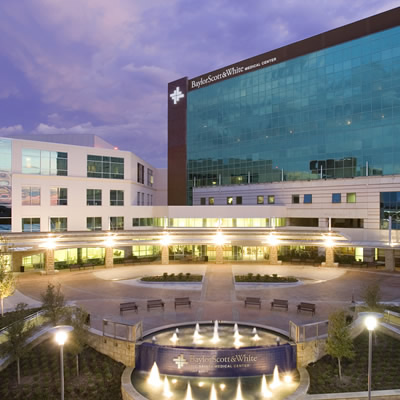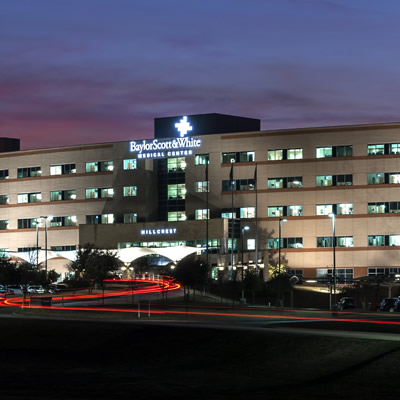What is preeclampsia?
Preeclampsia is a condition that causes high blood pressure during pregnancy or after childbirth. It can also lead to high levels of protein in the urine and damage organs throughout the body, including the kidneys, liver, heart and brain. The condition occurs after 20 weeks of pregnancy and, less frequently, in the days and weeks after delivery—known as postpartum preeclampsia.
How common is preeclampsia?
Preeclampsia affects up to 5 to 8% of pregnant women and is a serious and potentially life-threatening condition that increases the risk for other pregnancy complications. It’s also the cause of about 15% of premature deliveries (delivery before 37 weeks of pregnancy) in the US.
However, keeping up with your prenatal care appointments allows your obstetrician-gynecologist (OBGYN) to help you prevent preeclampsia or identify the symptoms and signs of preeclampsia early so you can be monitored and treated.
Preeclampsia symptoms
Many people with preeclampsia may not notice any signs or symptoms until a healthcare provider visit. For those who do experience symptoms, early indicators of preeclampsia can include high blood pressure, protein in the urine and water retention, which may lead to weight gain and swelling.
Other symptoms of preeclampsia may include:
- Headaches
- Blurry vision or sensitivity to light
- Dark spots in your vision
- Upper right side abdominal pain
- Swelling in your hands, ankles and face (edema)
- Shortness of breath
Often, preeclampsia is detected when your healthcare provider checks your blood pressure and urine during a prenatal appointment. It's crucial to inform your healthcare provider of any symptoms you’re experiencing.
Severe preeclampsia may present with additional signs such as:
- Hypertensive emergency (blood pressure of 160/110 mmHg or higher)
- Reduced kidney or liver function
- Fluid in the lungs (pulmonary edema)
- Low blood platelet levels (thrombocytopenia)
- Decreased urine output
If preeclampsia is severe, your healthcare provider may admit you to the hospital for closer monitoring, and in some cases, early delivery of your baby may be necessary.
When to see a doctor
Call your OBGYN whenever you experience concerning symptoms. They can help you identify if your symptoms are related to preeclampsia or another issue.
Seek emergency care immediately if you experience any of the following:
- A seizure or stroke-like symptoms (which indicate progression from preeclampsia to eclampsia, a condition that can cause seizures or a stroke)
- A severe headache
- High blood pressure of 160/110
- Severe difficulty breathing
- Severe pain in your belly
- Sudden swelling of your face or hands
- Vision changes
What causes preeclampsia?
The exact cause of preeclampsia likely involves multiple factors, with experts believing it begins in the placenta, the organ that nourishes the baby during pregnancy.
Normally, new blood vessels form early in pregnancy to supply oxygen and nutrients to the placenta. However, these blood vessels don't develop or function properly in preeclampsia. This poor blood circulation in the placenta may contribute to poor regulation of the mother's blood pressure.
Risk factors for preeclampsia
The risk of developing preeclampsia is typically divided into moderate and high risk.
Moderate risk factors include:
- Becoming pregnant more than 10 years after your first pregnancy
- Being age 35 or older
- Race/ethnicity (Black/African American women are at higher risk)
- A first pregnancy
- Having a mother or sister who had preeclampsia
- Having limited financial resources
- Having obesity
- A history of pregnancy complications, such as low-birthweight babies
- In vitro fertilization (IVF)
Factors that may put you at high risk for preeclampsia are:
- Previous preeclampsia
- Multiple pregnancy (twins, triplets or more)
- Chronic high blood pressure (hypertension)
- Pre-existing Type 1 or Type 2 diabetes
- Kidney disease
- Autoimmune disorders such as lupus
Complications
Most women with preeclampsia will have a safe delivery and recover well. However, if preeclampsia goes unrecognized, it can progress quickly and increase the risk of serious complications, which include:
- Fetal growth restriction: Reduced blood flow to the placenta can limit the baby's oxygen and nutrients, leading to slow growth.
- Preterm birth: Preeclampsia may require early delivery, increasing risks of breathing issues, developmental delays and cerebral palsy.
- Placental abruption: Increased risk of the placenta detaching from the uterus, causing severe bleeding.
- HELLP Syndrome: A severe form of preeclampsia causing hemolysis (breakdown of red blood cells), liver damage and low platelet count, with symptoms like nausea, headache and abdominal pain.
- Eclampsia: Seizures or coma related to preeclampsia, often without warning signs.
- Organ damage: Potential damage to kidneys, liver, lungs, heart or eyes, and risk of stroke or brain injury.
- Cardiovascular disease: Increased future risk of heart disease, especially after repeated preeclampsia or preterm delivery.
How is preeclampsia diagnosed?
Preeclampsia is typically diagnosed by your OBGYN, who will take your blood pressure, ask about your symptoms and perform a physical exam and tests. Tests may include blood and urine analysis, as well as monitoring your baby’s health.
Blood pressure
Your OBGYN will take your blood pressure during each office visit. If you are 20 or more weeks pregnant and your blood pressure is higher than 140/90, your OBGYN will typically repeat the measurement after a short period (often 15 minutes to a few hours), ideally while you are seated or resting. If your reading is still high, your doctor may order additional tests to confirm a diagnosis.
Blood test
A blood sample analyzed in a lab can reveal how well your liver and kidneys are functioning. Blood tests can also measure the level of blood platelets, which are essential for clotting.
Urine analysis
Your healthcare provider may request either a 24-hour urine sample or a single urine sample to determine how well your kidneys are working.
Fetal ultrasound
Your OBGYN will likely suggest closely monitoring your baby's growth, usually through an ultrasound. The ultrasound images help estimate your baby's weight and the amount of amniotic fluid in the uterus.
Nonstress test or biophysical profile
A nonstress test is a procedure that monitors how your baby's heart rate responds to their movements. A biophysical profile, on the other hand, uses ultrasound to assess your baby's breathing, muscle tone, movements and the amount of amniotic fluid in the uterus.
Preeclampsia treatment
The main treatment for preeclampsia involves either delivering the baby or managing the condition until the best time for delivery. The decision will be based on the severity of preeclampsia, your baby's gestational age and your overall health and that of your baby.
If preeclampsia is not severe, you may visit your OBGYN frequently to monitor your blood pressure, any changes in symptoms and your baby's health. You'll likely be asked to monitor your blood pressure daily at home.
-
Delivery
If preeclampsia develops earlier in pregnancy and your condition is stable, your OBGYN will want you to remain pregnant as long as possible — as long as preeclampsia isn’t putting your life in danger. You will have regular visits to monitor your blood pressure, ultrasounds and lab tests to ensure your condition does not progress.
If you are close to 37 weeks pregnant, your OBGYN may recommend delivery. You may still be able to have a vaginal delivery, but in some cases, a C-section might be safer. Your healthcare provider may administer medication to help the baby’s lungs develop and manage your blood pressure until delivery. In certain situations, delivering the baby early may be safer than prolonging the pregnancy.
If you’ve been diagnosed with severe preeclampsia, your healthcare team may recommend delivering your baby early—even if you haven’t reached your due date. This is because severe preeclampsia can lead to serious complications for both you and your baby if the pregnancy continues.
In most cases of severe preeclampsia, delivery is recommended no later than 34 weeks of pregnancy, and sometimes even sooner if your doctor is concerned about your health or the baby’s well-being. While your baby may need some extra support after birth, early delivery is often the safest option to protect both of you.
-
Medication
Severe preeclampsia requires hospitalization for close monitoring of your blood pressure and potential complications. Your OBGYN will regularly check your baby's growth and well-being.
Medications used to manage severe preeclampsia typically include:
- Antihypertensive drugs to lower blood pressure
- Anticonvulsant medication, such as magnesium sulfate, to prevent seizures
- Corticosteroids to aid in the development of your baby's lungs before delivery
How can you prevent preeclampsia?
You may not be able to prevent preeclampsia. However, if you have at least one high-risk factor or two or more moderate-risk factors, your OBGYN may recommend taking a daily low-dose aspirin. Do not start aspirin therapy on your own before talking with your doctor.
If you have a risk factor for preeclampsia, there are several steps you can take before and during pregnancy to reduce your risk. These include:
- Losing weight if you have obesity (before gaining weight during pregnancy)
- Managing blood pressure and blood sugar if you had high blood pressure or diabetes before pregnancy
- Maintaining a regular exercise routine
- Getting adequate sleep
- Eating a balanced diet low in salt and avoiding caffeine
Find specialized care for preeclampsia
Our maternal-fetal medicine specialists offer compassionate care for preeclampsia and other pregnancy complications that can lead to high-risk pregnancies. We offer several locations, including specialized high-risk pregnancy centers in North and Central Texas, and can help you get care at a location that fits your needs.

Baylor Scott & White Medical Center - McKinney
5252 W University Dr Highway 380 at Lake Forest Drive, McKinney, TX, 75071

Baylor Scott & White Medical Center - Lake Pointe
6800 Scenic Dr , Rowlett, TX, 75088

Baylor Scott & White Medical Center - Frisco at PGA Parkway
7600 Better Way , Frisco, TX, 75033

Baylor Scott & White Medical Center - Centennial
12505 Lebanon Rd , Frisco, TX, 75035

Baylor Scott & White Medical Center - Frisco
5601 Warren Pkwy , Frisco, TX, 75034

Baylor Scott & White Darlene G. Cass Women's Imaging Center at North Dallas
9101 N Central Expy Ste 200, Dallas, TX, 75231

Baylor Scott & White Darlene G. Cass Women's Imaging Center at Junius
3900 Junius St Ste 200, Dallas, TX, 75246

Baylor Scott & White Women's Health Group
3600 Gaston Ave Wadley Tower, Ste 1158, Dallas, TX, 75246
- Monday: 9:00 am - 5:00 pm
- Tuesday: 9:00 am - 5:00 pm
- Wednesday: 9:00 am - 5:00 pm
- Thursday: 9:00 am - 5:00 pm
- Friday: 9:00 am - 4:30 pm

Baylor University Medical Center, part of Baylor Scott & White Health
3500 Gaston Ave , Dallas, TX, 75246

Baylor Scott & White Medical Center - Irving
1901 N MacArthur Blvd , Irving, TX, 75061

Baylor Scott & White Medical Center - Grapevine
1650 W College St , Grapevine, TX, 76051

Baylor Scott & White Medical Center - Waxahachie
2400 N Interstate 35E , Waxahachie, TX, 75165

Baylor Scott & White All Saints Medical Center - Fort Worth
1400 8th Ave , Fort Worth, TX, 76104

Andrews Women's Hospital at Baylor Scott & White - Fort Worth
1400 8th Ave , Fort Worth, TX, 76104

Baylor Scott & White Medical Center - Hillcrest
100 Hillcrest Medical Blvd , Waco, TX, 76712

Baylor Scott & White Medical Center - College Station
700 Scott and White Dr , College Station, TX, 77845

Baylor Scott & White Medical Center - Temple
2401 S 31st St , Temple, TX, 76508

Baylor Scott & White Medical Center - Brenham
700 Medical Pkwy , Brenham, TX, 77833

Baylor Scott & White Medical Center - Round Rock
300 University Blvd , Round Rock, TX, 78665

Baylor Scott & White Medical Center - Lakeway
100 Medical Pkwy , Lakeway, TX, 78738

